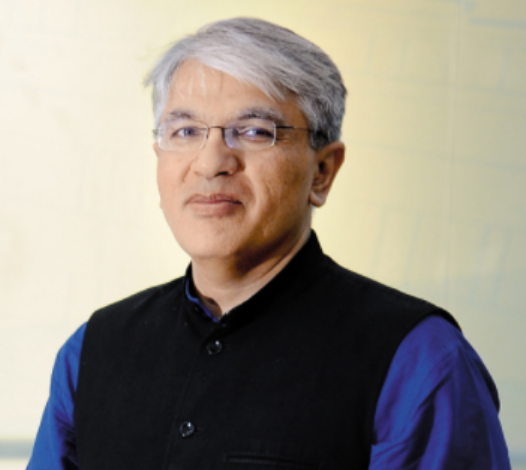Three ten-year plans

As India shifts from reducing poverty to boosting a middle class, goals must be set for land, labour, capital
Venture capitalists know that the most interesting dreams are those running towards something rather than running away from something. They also know that the most interesting entrepreneurs are those who know that a 10-year plan is not 10 one-year plans but don’t forget that entrepreneurship is the art of staying alive long enough to get lucky.
As India’s voters change the performance appraisal criteria for policymakers from reducing poverty for 100 million people to creating an 800 million-strong middle class, policymakers should respond by setting one 10-year goal for each of our three factor markets. In land, we should target a 0 per cent difference between rental yields and bank deposit rates instead of the 5 per cent today. In labour, we should target 50 per cent of our workers in formal wage employment instead of the 15 per cent today. In capital, we should target sovereign borrowing at 4 per cent instead of the 7 per cent today. India is ready for bigger dreams and goals are just dreams with a deadline. These three need ambition, teamwork and 10 years.
This new ambition does not imply that India’s shameful poverty is behind us; only that the “bhooka-nanga-pyaasa” condition of 1947 is no longer as acute, chronic or malignant as it was. Recent election results suggest that voters are lowering tolerance for policymakers with stale or weak ambition and want newer, bolder and inspiring policy goals. This shift is hardly surprising: The demands of the youth who show up to our job fairs has shifted from “naukri” to “achhi naukri”. Even the magnificent desert resort, Manvar, halfway between Jodhpur and Jaisalmer, has to pay starting housekeeping staff salaries of Rs 8,000 per month. India’s problem has shifted from providing jobs to raising wages; this needs higher productivity in land, labour and capital. Let’s look at three goals that synthesise this shift.
In land, the 5 per cent differential between rental yields (annual rent as a percentage of sale value) has many parents but is largely a child of spiritual returns on black money where you are not looking for return on capital but return of capital. In countries that are fertile habitats for job creation and home ownership, the difference between rental yields and bank deposits is almost zero. India’s real estate market should become less like Mumbai, with artificially limited quality supply in zoned commercial areas with high rents and huge commutes, and more like Bengaluru, with infinite quality supply in mixed use areas and commercial rentals that stayed the same for 15 years. Reaching this goal needs effective land records, improved suburban infrastructure, title guarantees, mixed use town planning, lower regulatory cholesterol around conversion, city governance and making life for black money difficult (GST, digitisation, less-cash, etc.)
India’s labour market shame is 50 per cent of our labour force working in agriculture (generating only 11 per cent of GDP) and 50 per cent self-employment (the poor cannot afford to be unemployed, so this is largely self-exploitation). We need more non-farm wage employment because not everybody can handle the agony and ecstasy of being an entrepreneur and the best way to help farmers is to have less of them. Reaching this goal needs reducing 45 per cent mandatory payroll confiscation, consolidating and simplifying labour laws, raising manufacturing from 11 per cent to 20 per cent of employment, issuing a universal enterprise number instead of the current 25-plus numbers, adopting a PPC (paperless, presenceless, cashless) portal for all compliance, education reform, apprenticeship expansion, quality urbanisation and more action in the ease of doing business.
India’s current central government borrowing rate of slightly less than 7 per cent set an important benchmark for pricing capital across the economy. But India’s growth potential, domestic saving and the global savings glut naturally position our government for lower borrowing costs. Reaching this goal needs fiscal discipline, lower inflation, lower farm employment, more productive enterprises, higher human capital, more individual tax payers and lower tax rates, effective central bank governance, nationalised bank reform, stressed loan resolution, bond market development, pension reform and much else.
These three goals qualify for what economist John Kay called obliquity: They will be reached indirectly by many parts of the central government working with each other and with state governments. Reaching these goals makes India a fertile habitat for entrepreneurship because they fix the mispricing that bias our three factor markets in favour of people with opening balances or regulatory connections over citizens who only have their own courage and strength.
My pre-1991 career showed me how the licence raj created companies that didn’t have clients but hostages; most of those companies are no longer exciting because animals bred in captivity find it hard to live in the jungle. Reforms changed things. As first-generation entrepreneurs, we couldn’t have scaled our company without the post-1991 infrastructure of private equity, institutional IPO markets and human capital marinated, matured and sharpened by competition. But India now needs bigger ambition.
The latest issue of Nature magazine has research by Starman, Sheskin and Bloom suggesting that humans are not bothered by economic inequality but by something often confused with inequality — economic unfairness. Drawing upon laboratory studies, cross-cultural research and experiments with babies and young children, they argue that humans naturally favour fair distributions, not equal ones. And when fairness and equality clash, people prefer fair inequality over unfair equality.
India has been an unfair economy and society for centuries. Creating an 800 million-strong middle class is the best way to create a fairer India. This creation needs the formalisation, urbanisation, industrialisation and human capital catalysed by three 10-year goals in land, labour and capital. After all, if you don’t have a dream, how can you have a dream come true?
This article was published in The Indian Express
Latest Blogs
Test Post
ecrvbtbtbybybyb ddecececec edececece edecece h1 tag h2 tag h3 tag h4 tag h5 tag h6 tag lsit 1 list 2 list 3 wsmw swwww efgh...
Read MoreRevitalizing and Transforming Manufacturing Sector in India
Challenges Confronting India's Manufacturing Marvel Inadequate Tech-Based Infrastructure:The enhancement of competitiveness in the manufacturing sector relies heavily on innovation-driven infrastructure, particularly in areas such as...
Read MoreTemporary Jobs Sees a Spike During Festive Hiring
The seasonal hiring landscape becomes more competitive A wider set of organisations is increasing the demand for temporary jobs. Employers looking to fill seasonal roles...
Read MoreThe Road Ahead: India’s FMCG Industry, Sector and Market Insights
Primary Forces Behind the Expansion of the FMCG Sector The Development of E-Commerce: The technological revolution impacted India's urban and rural areas. There has been...
Read MoreCurious Case of Educated Unemployment Problem in India
Key factors contributing to India’s joblessness Population growth vs. job creation Quality of education Skill gap Job mismatch Economic slowdown Preference for government jobs Why...
Read More





